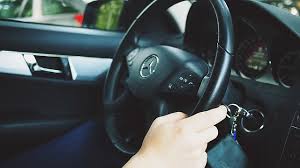But when you are not learning the traffic laws as much as you should, and when you don’t spend enough time learning how to drive, you become a bad driver and a danger for yourself and everyone else on the road. Learning how to drive is a skill, but a dangerous skill, and you should spend more than the required amount of time to become comfortable with it.
Requirements After Driver’s Ed
If you are younger than 18, before you can register for driving practice, you must complete a 30-hour driver’s education program, known as the Driver’s Ed. The course is offered online and covers traffic laws, road safety, your responsibilities as a driver, and how to avoid accidents. Once you have finished the course, you have to take a 46-question written exam at your local DMV.
The next step is behind-the-wheel training, providing you with an opportunity to practice driving, applying your newly acquired knowledge in real-life situations. In most states, you will need to complete at least 50 hours of supervised driving, a fraction of which has to be done during night time.
In order to apply for a provisional driver’s license, the driving training must consist of a minimum of six hours of training under the supervision of a professional driving instructor. It is important to note that your training cannot be longer than two hours per day, and the time you spend in the car observing another trainee does not count.
After your first lesson with a professional driving instructor, you are allowed to drive with another adult, parent, or guardian, who is at least 25 years old and has a valid license. This person will be your supervisor for the subsequent minimum of 50 hours of driving training. Usually, 10 of these hours must be completed during the night.
Once you have finished the required amount of behind-the-wheel training, you can go to your local DMW and apply for a provisional license. The driving instructor will give you a certificate of completion. Your parent or guardian will receive a document to sign, confirming that you have completed at least 50 hours of training with them.
Advice Besides Driver’s Ed
Advising on how long should you personally spend driving until you feel safe behind the wheel is a very difficult thing. Simply because it depends on your competency and comfortability with driving. Some teens spend most of their childhood around cars and by the time they apply for a provisional license, they are completely comfortable and confident in their skills.
Both aspects are equally important. If you are not comfortable driving, you will be prone to making nervous mistakes, and if you are not confident enough, you won’t drive as fast as you should in a fast-driving environment like a highway.
It’s important to note that the government has considered all that when setting requirements for Tobehind-the-wheel training. However, sometimes it is okay to admit you still feel nervous and insecure. In those situations it is wise to take a few extra hours and build that confidence, not only to pass the test but to feel confident in your driving skills after getting your driving license.
In the same way that passing practice tests for your learner’s permit will help you pass the final driver’s ed test, each extra hour of supervised driving helps you pass the driving test. Especially if you take the extra hours with an instructor. Don’t take this the wrong way, learning driving with your parents is perfectly fine, but driving instructors are specifically trained to pass the knowledge and analyze your skills. With an instructor, you will receive a much more personalized approach.
Be Honest With Yourself
For most of us, driving is the most dangerous thing we encounter in a day. But it has become so natural, we don’t think about the dangers. Yet, dangers exist, and they are best avoided when everyone follows traffic laws and uses safe-driving techniques.
If you are still afraid, nervous, insecure, you have to admit that to yourself, and then seek a few extra hours or advice. No one will judge you for it, you will do that for yourself. Because it is in your interest to become a safe driver.




